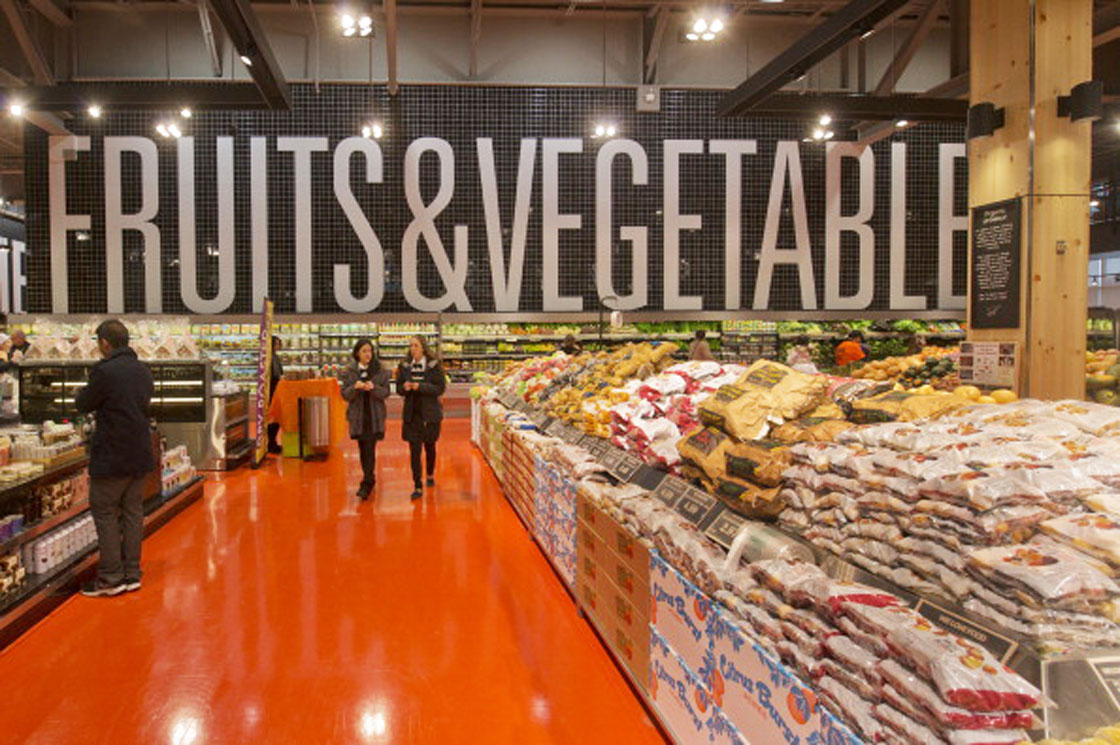Metro Inc., the country’s third-largest supermarket chain, is spending piles of cash this year overhauling stores to spruce them up and drive sales.

A key plank in the revamp calls for dramatically shrinking how much space the centre aisles take up to create room around the edges of the store, where produce, dairy and meat products are found. No less than 60 per cent of the floor in renovated Metro stores will be dedicated to fruits, vegetables and other fresh foods, the company says, compared with 40 per cent under the grocer’s old store plan.
Metro isn’t alone. Loblaw, Save-On-Foods, Sobeys, Safeway – all the players – are moving to sell shoppers more fresh foods.
Why the sudden push? There are several reasons, according to experts, all having to do in one way or another with making more money. Here’s the five primary ones:
Shoppers want it
“It’s going where the shopper is going,” said Stewart Samuel, an expert in strategy for IGD, a research firm that looks exclusively at supermarkets.
There’s a reason why shops like Whole Foods, Trader Joe’s and Sprouts Farmers Markets have flourished south of the border, and are now eyeing northern expansions – a growing number of consumers, including in Canada, are seeking out healthier food.
MORE: See the complete Your Food series
Sprouts Farmers Markets dedicate nearly two-thirds of their floor plans to fresh foods, Samuel says, or the same amount Metro is laying down.
Separate from pack
More than 40 per cent of the $120 billion spent by Canadians at supermarkets last year went to discount or “value” supermarkets like Loblaws’ No Frills. That’s an increase of nearly four per cent from 2013, according to Nielsen research.

Get weekly money news
The rise of value banners — led by the steady encroachment of Walmart Supercentres — is forcing grocers to come up with ways to differentiate their more profitable conventional banners and avoid chasing shoppers by cutting prices.
“We have to work a little bit harder to make it shine,” Sobeys chief executive Marc Poulin said in March.
Enter the push into fresh, which includes outfitting stores with food preparation stations, juice bars and more. That means expanding produce and prepared food sections, while reducing aisles that sell the same packaged goods as the discount guy down the road.
“The centre of the store doesn’t give you much opportunity to differentiate,” IGD’s Samuel said. “But around the edge of the store they can do some really different things.”
Save-On-Food’s Kitchen concept, which has store staff preparing “soon-to-be family favourites freshly made right before your eyes,” is a good example among many being rolled out at Canadian supermarkets.
“It’s adding theatre, colour and excitement to that shopping trip,” Samuel said.
Profits in produce
“From an economic perspective, there is the potential for better operating margins,” the IGD analyst said. That’s analyst econo-speak for making more money.
Fruits, vegetables as well as meat often carry higher prices compared to packaged foods. That leaves more room to widen profit margins if wholesale costs fall while retail pricing can be sustained.
Bacon prices are a good example. Consumers have been conditioned to pay more for bacon in recent years as pork prices have spiked. Yet as wholesale hog prices now fall back to earth for grocers, shoppers haven’t seen the savings passed on.
Millennials, of course
By 2018, global spending among Millennials (defined as those born between 1980 and 2000) will overshadow the consumer spending of baby boomers, according to KPMG, the sprawling professional services firm.
This rather large demographic has a penchant to indulge, Willy Kruh, global chair, consumer markets for KPMG, says, but also carries a far higher regard for social, health and environmental considerations. That’s a recipe for fresh food sales grocers everywhere aren’t overlooking.
“Millennials prefer whole foods over processed. They want to know how food is grown, and will spend more on ethically sourced foods than older generations,” Kruh said.
Big Food is doing it
Shrinking centre aisles poses an existential crisis for some major processed-food giants. Since 2009, the Top 25 U.S. food and beverage firms have lost a combined $18 billion in market share according to Credit Suisse, as shoppers shift tastes away from overly processed products.
More than ever, Big Food is developing a pipeline of fresh alternatives to jumpstart sales. They’re also fundamentally altering some classics to make them more attractive to our new, evolving tastes. Kraft Foods for example is removing synthetic colours and preservatives from its flagship mac-and-cheese, KD.
WATCH: What’s in Kraft Dinner anyway? We find out
“We understand that increasing numbers of consumers are seeking authentic, genuine food experiences,” Denise Morrison, CEO of Campbell’s Soup Co. said at a U.S. conference in February.
To that end, Campbell’s bought Bolthouse Farms, a juice and veggie smoothie maker in 2012 – one in a string of acquisitions since then.
Bolthouse’s smoothies are sold in the produce section at U.S. supermarkets, and come with the added bonus of allowing Campbell’s to call itself an “organic carrot farmer.”










Comments